Artificial cartilage with the help of 3D printing
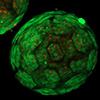 A new approach to producing artificial tissue where cells are grown in microstructures created in a 3D printer.
A new approach to producing artificial tissue where cells are grown in microstructures created in a 3D printer.
Feb 12th, 2024
Read more
 Subscribe to our Biotechnology News feed
Subscribe to our Biotechnology News feed
 A new approach to producing artificial tissue where cells are grown in microstructures created in a 3D printer.
A new approach to producing artificial tissue where cells are grown in microstructures created in a 3D printer.
Feb 12th, 2024
Read more A trained AI system learns to design cellular materials with specific target properties for a wide range of potential uses, including tissue engineering and energy storage.
A trained AI system learns to design cellular materials with specific target properties for a wide range of potential uses, including tissue engineering and energy storage.
Feb 8th, 2024
Read more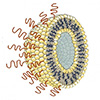 A new coating for tiny vaccine carriers allows vaccines to remain in the body for longer.
A new coating for tiny vaccine carriers allows vaccines to remain in the body for longer.
Feb 8th, 2024
Read more Scientists have engineered the genome of the bacterium Escherichia coli (E. coli) to make it immune to viral infections.
Scientists have engineered the genome of the bacterium Escherichia coli (E. coli) to make it immune to viral infections.
Feb 7th, 2024
Read more A new computer program allows scientists to design synthetic DNA segments that indicate, in real time, the state of cells. It will be used to screen for anti-cancer or viral infections drugs, or to improve gene and cell-based immunotherapies.
A new computer program allows scientists to design synthetic DNA segments that indicate, in real time, the state of cells. It will be used to screen for anti-cancer or viral infections drugs, or to improve gene and cell-based immunotherapies.
Feb 5th, 2024
Read more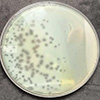 Researchers have successfully coaxed a deadly pathogen to destroy itself from the inside out.
Researchers have successfully coaxed a deadly pathogen to destroy itself from the inside out.
Jan 31st, 2024
Read more Directing microfluidic vortex flows to deposit recombinant E. coli cells as surface-adhered biofilms creates a new class of highly resilient, self-regenerative bioreactors for scalable biomaterial production.
Directing microfluidic vortex flows to deposit recombinant E. coli cells as surface-adhered biofilms creates a new class of highly resilient, self-regenerative bioreactors for scalable biomaterial production.
Jan 31st, 2024
Read more Scientists developed a cutting-edge method that combines the power of designer-recombinases with programmable DNA-binding domains to create precise and adaptable genome editing tools.
Scientists developed a cutting-edge method that combines the power of designer-recombinases with programmable DNA-binding domains to create precise and adaptable genome editing tools.
Jan 31st, 2024
Read more Using a DNA-based scaffold carrying viral proteins, researchers created a vaccine that provokes a strong antibody response against SARS-CoV-2.
Using a DNA-based scaffold carrying viral proteins, researchers created a vaccine that provokes a strong antibody response against SARS-CoV-2.
Jan 30th, 2024
Read more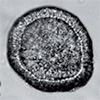 The majority of high-grade ovarian cancers involve mutations in the p53 tumor suppressor gene, crucial for DNA repair and cell regulation. Researchers now developed a synthetic mRNA that successfully produced functional p53 protein in laboratory conditions, showing promise in cancer cell lines.
The majority of high-grade ovarian cancers involve mutations in the p53 tumor suppressor gene, crucial for DNA repair and cell regulation. Researchers now developed a synthetic mRNA that successfully produced functional p53 protein in laboratory conditions, showing promise in cancer cell lines.
Jan 24th, 2024
Read more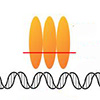 Insights into homologous recombination (HR) promise new insights into cancer.
Insights into homologous recombination (HR) promise new insights into cancer.
Jan 20th, 2024
Read more Researchers demonstrate how machine learning models can predict anti-inflammatory potential of polymers, enabling faster design of immunomodulatory biomaterials for medical implants.
Researchers demonstrate how machine learning models can predict anti-inflammatory potential of polymers, enabling faster design of immunomodulatory biomaterials for medical implants.
Jan 20th, 2024
Read more The flexibility of a protein hinge plays a crucial role in the transfer of proteins in key cell processes.
The flexibility of a protein hinge plays a crucial role in the transfer of proteins in key cell processes.
Jan 17th, 2024
Read more Scientists devise method to speed up observations of high-throughput microbiological process.
Scientists devise method to speed up observations of high-throughput microbiological process.
Jan 15th, 2024
Read more Researchers presented a novel kind of cyclic peptide that, when light-irradiated, induces the formation or dissociation of nanotubes on demand.
Researchers presented a novel kind of cyclic peptide that, when light-irradiated, induces the formation or dissociation of nanotubes on demand.
Jan 3rd, 2024
Read more Novel corn protein scaffolds match standard tissue engineering materials in supporting human stem cells while enabling stable, customizable structures.
Novel corn protein scaffolds match standard tissue engineering materials in supporting human stem cells while enabling stable, customizable structures.
Dec 28th, 2023
Read more Scientists successfully harnessed artificial intelligence (AI) and deep-learning techniques to model atomic-level RNA 3D structures from primary RNA sequences. Called DRfold, this novel AI-based method improves the accuracy of RNA models by more than 70 percent, compared to traditional approaches.
Scientists successfully harnessed artificial intelligence (AI) and deep-learning techniques to model atomic-level RNA 3D structures from primary RNA sequences. Called DRfold, this novel AI-based method improves the accuracy of RNA models by more than 70 percent, compared to traditional approaches.
Dec 21st, 2023
Read more A new technique to clone and reassemble DNA, dubbed CReATiNG, could simplify and lower the cost to make synthetic chromosomes.
A new technique to clone and reassemble DNA, dubbed CReATiNG, could simplify and lower the cost to make synthetic chromosomes.
Dec 20th, 2023
Read more